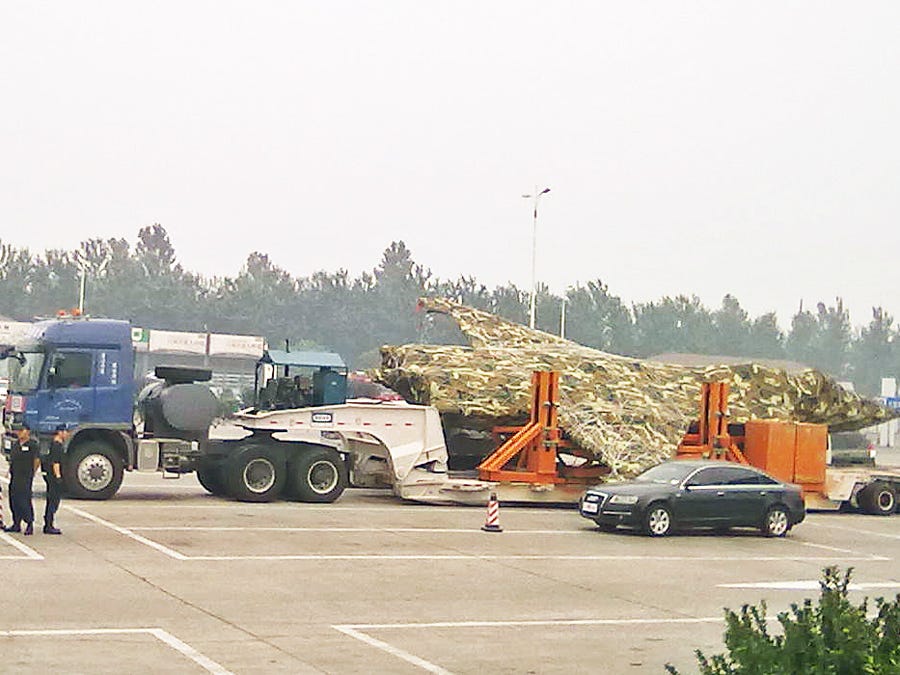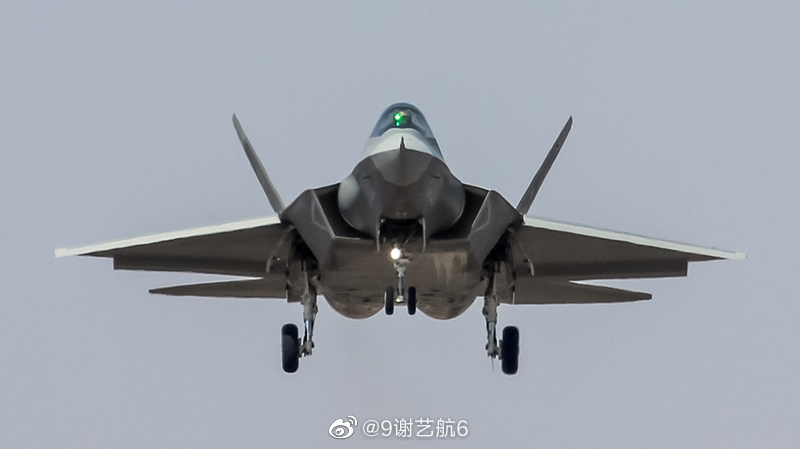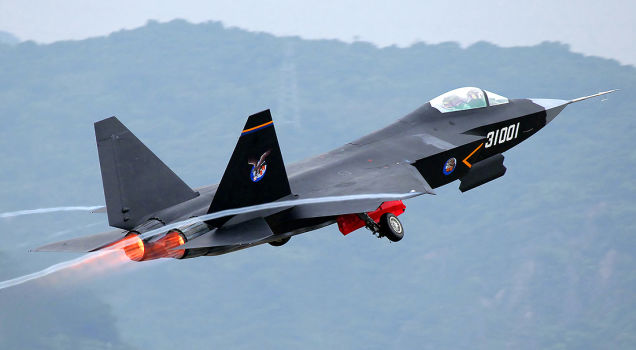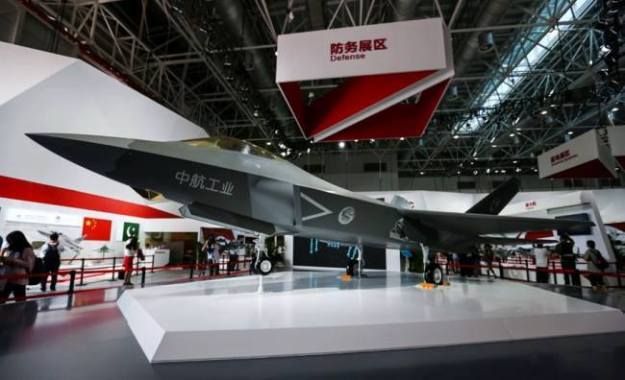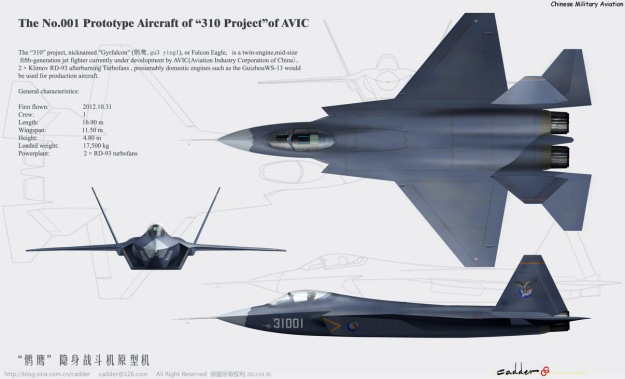China’s New 5th Gen Fighter Aircraft J-31: Scrap or Masterpiece
source : https://defenceview.in/chinas-new-5th-gen-fighter-aircraft-j-31-scrap-or-masterpiece/
J-20 or J -31? The rhetoric of the PRC media is stirring up the idea that it is necessary to hurry up and urgently create its own fifth-generation carrier-based fighter – a competitor to the F-35. And let it be a modernized J-20 or J-31, or even a completely new development, but we must hurry! And on the Chinese Internet, the debate about which aircraft, the J-20 or the J-31, is best suited for landing on the deck of an aircraft carrier? In fact, China currently does not have a new generation carrier-based fighter.
J-31 prototype (31001)
The situation around China is turbulent. On the one hand, the US Navy, Air Force and Marine Corps continue to deploy fifth-generation stealth fighters in China’s periphery. On the other hand, China’s neighbors such as Japan, South Korea and Singapore have purchased and continue to purchase fifth-generation F-35 stealth fighters from the United States.
In the event of a military conflict, Chinese aircraft carriers will carry out regional missions to counter and prevent invasion. The J-15 Flying Shark and Zhi-18 fighters are currently the sole main force of the carrier-based aircraft of the Chinese aircraft carrier. The J-15 is a derivative of the Russian Su-27 fighter.
China continues to lack specialized electronic warfare and early warning aircraft. And most importantly, the J-15 cannot compete with the American F-35, which the Chinese Navy and Air Force planned to oppose with the J-20 fighters. They were designed to counter the F-35 and F-22 fighters.
Mock-up cockpit of the J-31 as it was shown in public
The J-20 is China’s first fifth-generation stealth fighter in service. According to observers, its combat capability is comparable to that of the American F-22 fighter, and it is enough to counter the F-35 fighters. But if China wants to quickly develop a fifth-generation stealthy carrier-based fighter based on land-based aircraft, then the only prototype it can use is the J-31 ( FC-31 ), ideally it can compete with the F-35.
Traditionally, the Chinese media are getting ahead of ourselves and are already announcing the J-31 as ready to enter service with the PLA Navy. But this is not the case.
The design of the ground-based aircraft must be strengthened, which, of course, will lead to an increase in the weight of the aircraft and a decrease in combat performance. The technology of upgrading a fighter to a deck version, one way or another, will affect its aerodynamics, cockpit, structure, chassis, engine, electrical equipment and other components, and even brake cables on an aircraft carrier must be developed independently and for the upgraded apparatus.
When deciding how to upgrade and adapt the J-31 for operation from aircraft carriers, the main issue that causes difficulties is increasing the thrust of the J-31 engine. It is necessary to bring the thrust indicators to those parameters that would provide not only super-manoeuvrability but also the ability to take off from the deck of aircraft carriers without problems. Starting with Type 003, PLA Navy aircraft carriers have a flat deck. It is for this option that the newest Chinese fighter J-31 will be modernized. And although in the Chinese press, in recent years, they almost constantly declare a “breakthrough” in aircraft engine building, talking about the WS-15 engine with a thrust of 14.5 thousand kgf at a turbine temperature of 1400 ℃, but with the use of this power plant on fighters the new generation J-31 has difficulties.
J-31 at Airshow in China held in Zhuhai
Another problem is the increase in the range of combat use and missile and bomb load. The maximum take-off weight of the J-31, after numerous modifications, was increased to 28 tons. However, the mass of the mentioned missile and bomb load remained at the original level – up to 8 tons. The main focus was on increasing the fuel load in order to increase the range. Attempts to increase the payload are faced with, so far, insurmountable difficulties: either increase the volume of internal compartments, which will automatically lead to a decrease in the available volume for fuel tanks or hang weapons on external suspensions, which will actually lead to a levelling of stealth characteristics, which they like to talk about so much in China.
The J-31 was first shown to the public in October 2012, a mid-range, twin-engine stealth fighter with a lowered radar signature.
Unlike the J-20, which has an unconventional canard configuration for other fifth-generation fighters with a huge delta wing with influxes, forward horizontal tail and all-turning fins, the FC-31 is made according to the classical aerodynamic layout with a small trapezoidal wing and the same horizontal tail. … The two new Chinese fighters are related only to the external compression air intakes of the DSI type (the same ones are used on the F-35), and general approaches to ensuring the reduction of radar signature and equipment onboard equipment (including the use of radar with AFAR).
By the way, the new program for recruiting PLA Navy pilots for new-generation aircraft is designed for five years of training. Most likely, the PLA Navy plans that during these five years, the J-31 fighter will be upgraded to a carrier-based version


